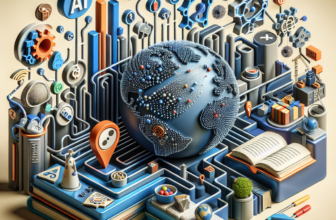The Evolution of AI Voice Generators: From Text-to-Speech to Natural Language Generation
The Evolution of AI Voice Generators: From Text-to-Speech to Natural Language Generation
Over the years, the development of AI voice generators has transformed dramatically. What started as simple text-to-speech technology has evolved into advanced natural language generation systems that can produce incredibly human-like voices. In this article, we’ll explore the evolution of AI voice generators and how they have revolutionized the way we interact with technology.
Text-to-Speech Technology
Text-to-speech technology, or TTS, was one of the earliest forms of AI voice generation. This technology allowed computers to convert written text into spoken words, providing a way for users to listen to written content. TTS systems initially produced robotic, monotone voices that lacked emotion and natural intonation. However, as technology advanced, TTS voices became more realistic and natural-sounding.
One of the key advancements in TTS technology was the development of neural network-based models, which enabled the creation of more human-like voices. These models used deep learning algorithms to analyze and mimic the nuances of natural speech, resulting in more expressive and natural-sounding TTS voices.
Voice Assistants and Natural Language Processing
The rise of voice assistants such as Siri, Alexa, and Google Assistant brought about a new era of AI voice generation. These voice assistants utilized natural language processing (NLP) to understand and respond to spoken commands and queries from users. NLP allowed voice assistants to interpret and process natural language input, enabling them to generate more human-like responses.
Voice assistants also incorporated TTS technology to produce spoken responses, further blurring the lines between human and machine-generated voices. As a result, users could interact with voice assistants as if they were engaging in a conversation with another person.
Natural Language Generation
Natural language generation (NLG) represents the latest advancement in AI voice generation. NLG systems are capable of generating human-like speech with complex intonation, emotion, and inflection. These systems analyze and interpret data to generate natural-sounding spoken content, making them ideal for applications such as virtual assistants, customer service bots, and voice-based content creation.
One of the key developments in NLG technology is the use of generative pre-trained transformer (GPT) models, which leverage large-scale neural networks to generate highly natural-sounding speech. These models have significantly advanced the state-of-the-art in AI voice generation, producing voices that are nearly indistinguishable from those of human speakers.
FAQ
What are the applications of AI voice generators?
AI voice generators have a wide range of applications, including virtual assistants, customer service bots, voice-based content creation, and more. These systems are used to produce spoken content for various purposes, such as providing information, answering questions, and interacting with users in a natural and engaging manner.
How do AI voice generators work?
AI voice generators utilize a combination of natural language processing (NLP) and text-to-speech (TTS) technology to interpret and produce human-like speech. These systems analyze and interpret input data, such as written text or spoken commands, and generate corresponding spoken output that closely resembles natural speech.
What are the benefits of AI voice generators?
AI voice generators offer several benefits, including improved accessibility for individuals with visual impairments, enhanced user engagement through natural and conversational interactions, and the ability to automate spoken content creation for a variety of applications. These systems also have the potential to revolutionize the way we interact with technology and consume spoken content.
What is the future of AI voice generation?
The future of AI voice generation is incredibly promising, with continued advancements in natural language generation (NLG) technology leading to ever-more natural-sounding voices. As these systems become more sophisticated and capable, we can expect to see a further integration of AI voice generators into various aspects of our daily lives, from virtual assistants and customer service bots to voice-based content creation and beyond.
In conclusion, the evolution of AI voice generators has led to significant advancements in text-to-speech, natural language processing, and natural language generation technologies. These advancements have transformed the way we interact with technology and consume spoken content, and the future of AI voice generation holds great promise for even more sophisticated and natural-sounding voices.






